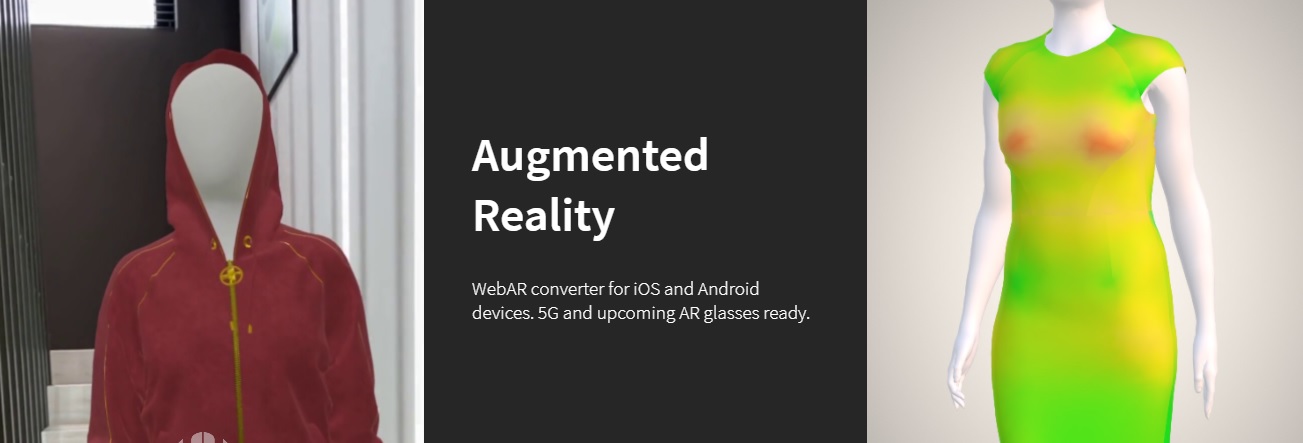With the development of new technologies and progressive digitalization, many industries are finding ways to implement new solutions in their fields. It is no different with the fashion industry. Today we would like to show you some of the coolest products of FashTech – from digital fashion shows, to virtual fitting rooms and digital clothes. What will the digital future of the fashion industry be?
Fashion industry shows
The pandemic has redefined the balance of power in the world of business. Some brands could spread their wings, but for many others, it was a difficult time. We could also see how much we rely on online services in all aspects of our lives.
It is truly fascinating how some brands took up the fight and implemented new solutions to digitize their facilities. The fashion industry too has risen to the occasion. They have used new technologies to replace some of the things they couldn’t do due to safety measures.
For many brands in the industry, fashion shows drive sales and attract customers. Unfortunately, with the restrictions on social gatherings, the traditional form of fashion show, with a big audience, has been impossible to hold.
This has led brands to the idea of virtual shows, where the whole thing is happening on viewers’ screens. Of course, nothing replaces sitting in the audience in a big hall, watching the models, the garments, and the lights with one’s own eyes. But for smaller brands, virtual shows could be a great, cheap way of promoting their collections.
Have you heard about “deep fake” technology? It was used to present the recent Balenciaga show “Balenciaga Clones Spring 22 Collection”.
During this surrealistic show, viewers could only see one model on the runway, Eliza Douglas. It appeared that she presented all 44 designs.
In fact, there were many models taking part in the show. But the creators used deep fake technology to turn every models’ face into Eliza’s. This would not be possible without the help of 3D modeling and machine learning tools.
The introduction to the “Balenciaga Clones” show says – “We see our world through a filter – perfected, polished, conformed, photoshopped, we no longer decipher between unedited and altered, genuine and counterfeit, tangible and conceptual, fact and fiction, fake and deepfake.”.
Virtual fitting room
There is no doubt that e-commerce has been taking over the world of shopping in most places of the globe. In 2020, over two billion people purchased goods or services online. For most of us, online shopping has recently become the main way of buying clothes. It has only one disadvantage – you can’t try on the garments!
How many times have you held back from buying something, only because you were not sure it would fit? With some of the new technologies entering the fashion world, this could change.
A great example is WEARFITS, a brand offering virtual fitting rooms for e-commerce. They use 3D & Augmented Reality technologies to provide a better online shopping experience.
Foot scanner for virtual try-on, body avatar generator, and virtual models. Is this the future of online shopping? Such technology is only starting to enter the market, but it’s very likely that it will completely change our habits and the way we think about online shopping.

Digital clothes
Have you ever thought that your clothes could be made of pixels? This outstanding idea has been gaining popularity recently. It sounds quite crazy, but it actually makes a lot of sense. Especially when you think of fast fashion and how quickly we get bored with our clothes.
Imagine a world where we only have a couple of basic garments but a virtual wardrobe full of all different kinds of styles and designs. All this being relatively cheap and super eco! Taking a picture for your Instagram or blog? Choose whatever outfit fits best!
While this vision could sound a little bit like fantasy, there are ways of using this technology in today’s world. Some of the biggest brands in the industry are working to fully digitize their design processes to minimize waste.
Among them is Tommy Hilfiger. The brand’s goal is to switch its design processes to completely digital methods by 2022. They paired up with The Fabricant, a company specializing in creating digital apparel.
“A DESIGN METHOD THAT WASTES NOTHING BUT DATA” – sounds good, doesn’t it?
PUMA, on the other hand, has used new technologies in the marketing campaign of their ‘Day Zero” collection. By making the launch fully digital, they reduced the water consumption of the collection by up to 17.4 percent! (source:https://www.thefabricant.com/puma)

Best fashion tech brands
Apart from digitizing the design and sales processes in the fashion industry, FashTech is also about using new technologies in the production of clothes.
We have a list of amazing brands, reshaping the industry with their modern products. Check them out:
- Ministry of Supply – they specialize in creating business wear using new materials, aerospace, robotic engineering, and thermal analysis.
- Modern Meadow – creating lab-grown leather without harming animals.
- Jacquard – connects your physical things to digital services and information.
- Nadi X by Wearable X – yoga pants with sensors that vibrate as you move through poses to help guide you into alignment.
- Hexoskin – Non-invasive & comfortable smart clothing which gives you insights into your health status, sleep, and personal daily activities.
We are going to let you do the rest of the research on your own. The world of Fash Tech is wider than you’d expect, with more and more brands and startups entering the market and launching new products. We recommend this article about the most important technologies used in the Fashion industry: https://techpacker.com/blog/design/top-7-fashion-technology-trends/.